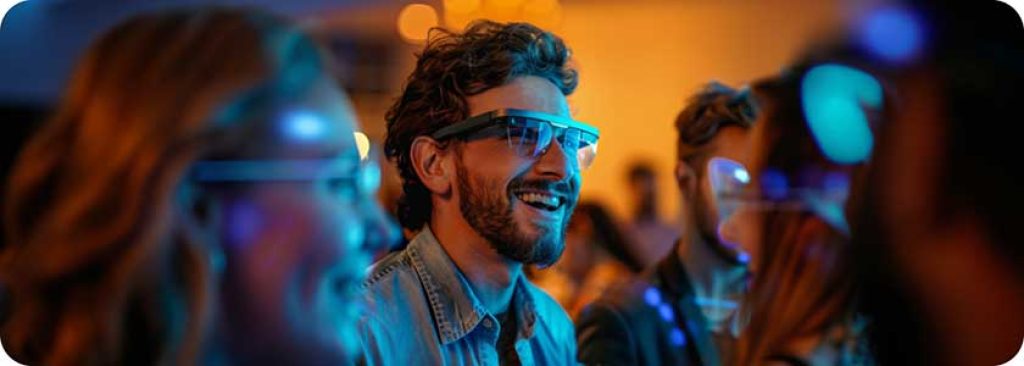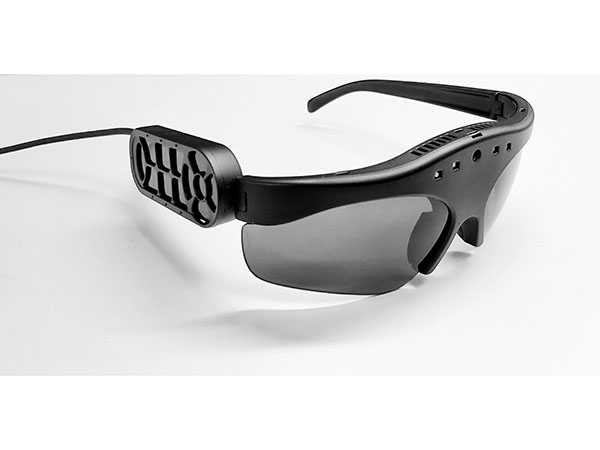OCR Devices for the Blind: Breaking Barriers with Optical Character Recognition
OCR Devices for the Blind: Breaking Barriers with Optical Character Recognition
Blog Article
Discover Advanced Assistive Instruments for People With Aesthetic Disabilities
The landscape of assistive technology for people with visual problems is progressing rapidly, providing a range of ingenious gadgets that enhance freedom and interaction. From wise glasses that seamlessly combine visual input with acoustic guidance to sophisticated navigation applications that redefine spatial understanding, these devices are reshaping opportunities.
Smart Glasses Innovations
Smart glasses stand for a considerable advancement in assistive technology for people with visual impairments. These ingenious devices integrate different functions made to boost the user's communication with their setting. Equipped with video cameras and sensors, wise glasses can record real-time aesthetic details, which is after that refined and shared to the customer via sound responses or haptic sensations. This capability permits people to get instant descriptions of their environments, boosting their ability to engage and browse with the globe.
Furthermore, advancements in expert system have further improved the capacities of wise glasses. Machine understanding algorithms can identify faces, checked out message, and identify items, making them indispensable devices for daily jobs. Users can get auditory signs that offer context about their atmosphere, promoting freedom and confidence.
In addition, the ergonomic layout and light-weight nature of numerous clever glasses make them suitable for extended usage, guaranteeing convenience while enhancing performance. As these tools remain to advance, they hold the possible to transform the means individuals with aesthetic problems experience their lives, linking the space in between access and technology. The ongoing r & d in this field pledge to expand the possibilities for smart glasses, making them a necessary part of modern-day assistive tools.
Navigation Apps and Equipment
Numerous navigation apps and devices have become important resources for individuals with visual disabilities, significantly boosting their capacity to traverse unfamiliar environments. These modern technologies leverage GPS capability, audio cues, and real-time data to provide users with accurate navigation support.
One prominent example is the Aira app, which connects customers to experienced representatives that can offer visual descriptions of environments and navigation support with a real-time video clip feed. This service boosts the customer's spatial recognition and self-confidence while navigating. One more noteworthy tool is Seeing Eye GPS, which uses voice-guided navigating and points of interest, making it possible for customers to accessibility essential details regarding their surroundings.

As technology remains to breakthrough, the advancement of much more advanced navigating devices promises to additional empower people with aesthetic problems, assisting in seamless wheelchair and integration right into varied environments. Such technologies are important in advertising a more comprehensive culture.
Braille Technology Improvements
In recent times, innovations in Braille innovation have considerably changed just how people with visual problems accessibility details and engage with the world around them. The development of mobile Braille display screens has actually reinvented reading by allowing customers to link wirelessly to mobile phones, tablets, and computer systems. These gadgets convert message into Braille in real-time, making it possible for smooth interaction with electronic content.
Furthermore, innovative Braille printers have actually arised, enhancing the production of responsive products. Modern embossers are quicker and more reliable, allowing for the rapid development of Braille records and academic materials. This efficiency decreases the moment and cost related to producing Braille resources, making them more easily accessible to organizations and schools.
Furthermore, the combination of Braille with other innovations, such as expert system and artificial intelligence, has opened up new avenues for customized understanding experiences. Voice acknowledgment and synthesis modern technologies can enhance Braille, giving an inclusive method to details circulation.
As the need for inclusive education and office atmospheres grows, these technological improvements play an essential function in encouraging people with aesthetic disabilities, guaranteeing they have equal access to information and opportunities in numerous facets of life.
Wearable Gadgets for Independence
A growing variety of wearable devices is boosting self-reliance for people with aesthetic disabilities, supplying cutting-edge options that enhance navigation and day-to-day living. Braille displays and notetakers. These gadgets utilize sophisticated technologies to give real-time comments and support, promoting autonomy in different atmospheres

Wearable modern technology also consists of smartwatches that can be configured with ease of access functions, making it possible for users to receive notices, track their locations, or perhaps ask for aid with the touch of a button. Additionally, some gadgets incorporate fabricated intelligence to analyze the setting, offering audio descriptions of close-by things or people.
Voice-Activated Assistive Solutions
Leveraging voice-activated assistive services has actually transformed the landscape of support for individuals with aesthetic disabilities, providing hands-free interaction and accessibility to a variety of jobs. These innovations utilize natural language handling and expert system to allow customers to execute everyday tasks with simple voice commands.

Additionally, current innovations in voice acknowledgment accuracy have improved the user experience find out here dramatically, accommodating diverse accents and speech patterns. This inclusivity guarantees that even more people can take advantage of these innovations, cultivating a better sense of autonomy.
Conclusion
To conclude, the development of sophisticated assistive devices considerably boosts the self-reliance and lifestyle for individuals with aesthetic problems. Developments such as wise glasses, navigation applications, Braille innovation, wearable tools, and voice-activated options collectively foster an even more inclusive environment. These technologies equip individuals to navigate their environments with confidence and involve more fully with the globe, inevitably promoting higher ease of access and level playing fields for people facing aesthetic obstacles.
The landscape of assistive modern technology for people with aesthetic impairments is evolving quickly, providing a range of cutting-edge tools that boost freedom and engagement.Smart glasses represent a significant development in assistive modern technology for individuals with aesthetic impairments. As these gadgets proceed to advance, they hold the prospective to revolutionize the method people with aesthetic problems experience their day-to-day lives, bridging the void between availability and technology.In current years, advancements in oculist doctor Braille technology have actually significantly transformed just how individuals with visual problems accessibility details and engage with the world around them. These modern technologies encourage individuals to navigate their environments with confidence and involve even more fully with the globe, eventually advertising higher ease of access and equivalent possibilities for people facing visual difficulties.
Report this page